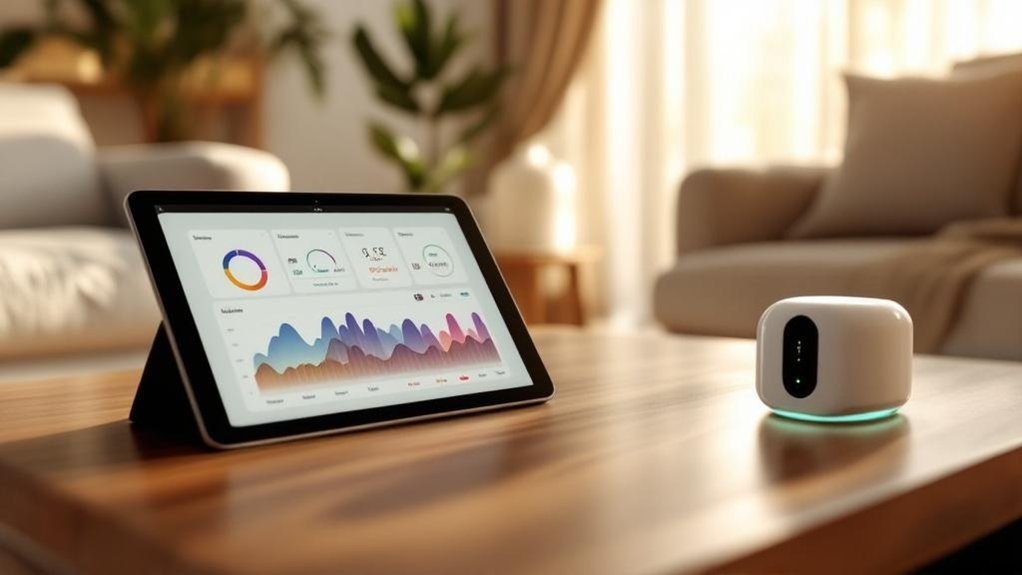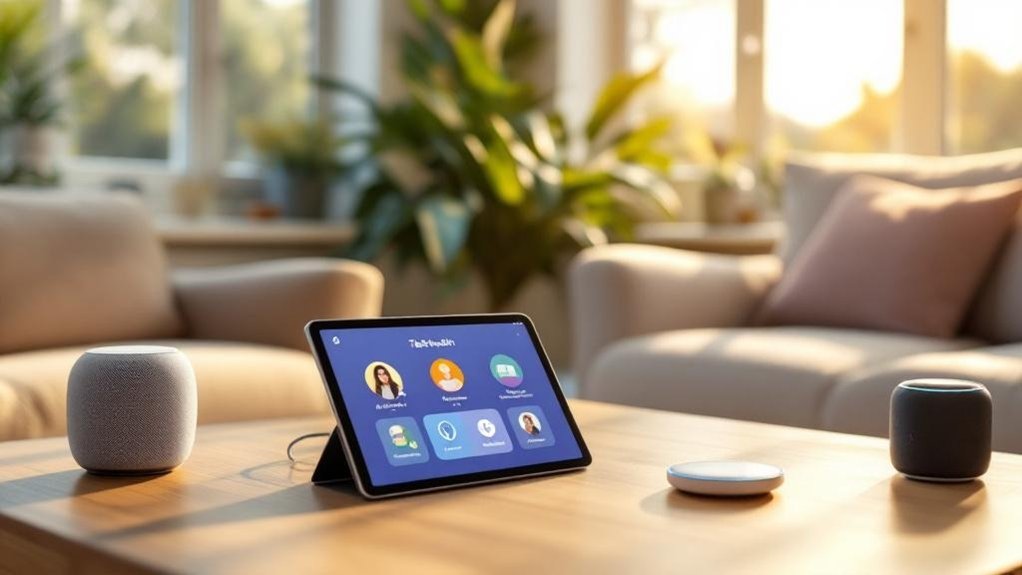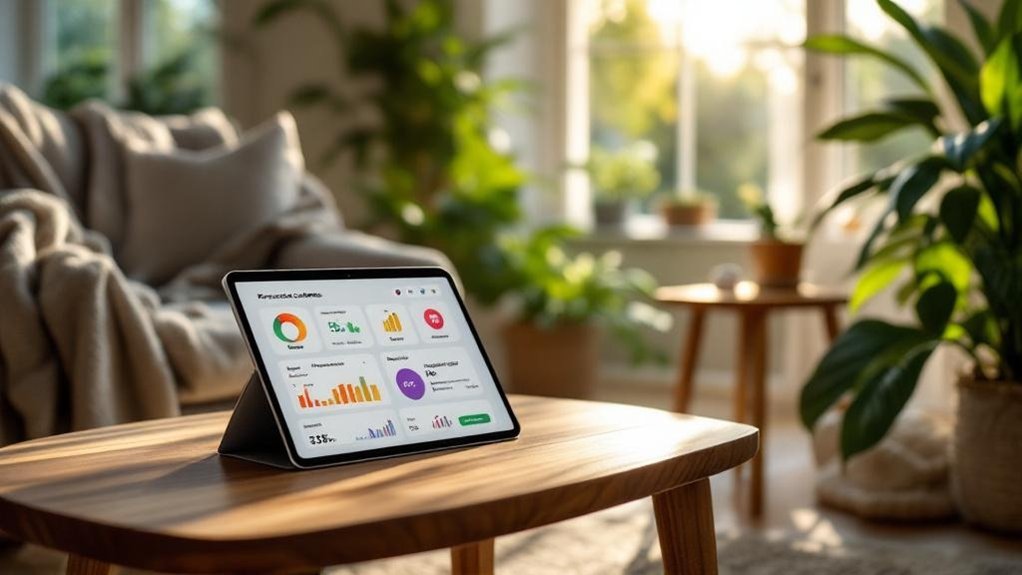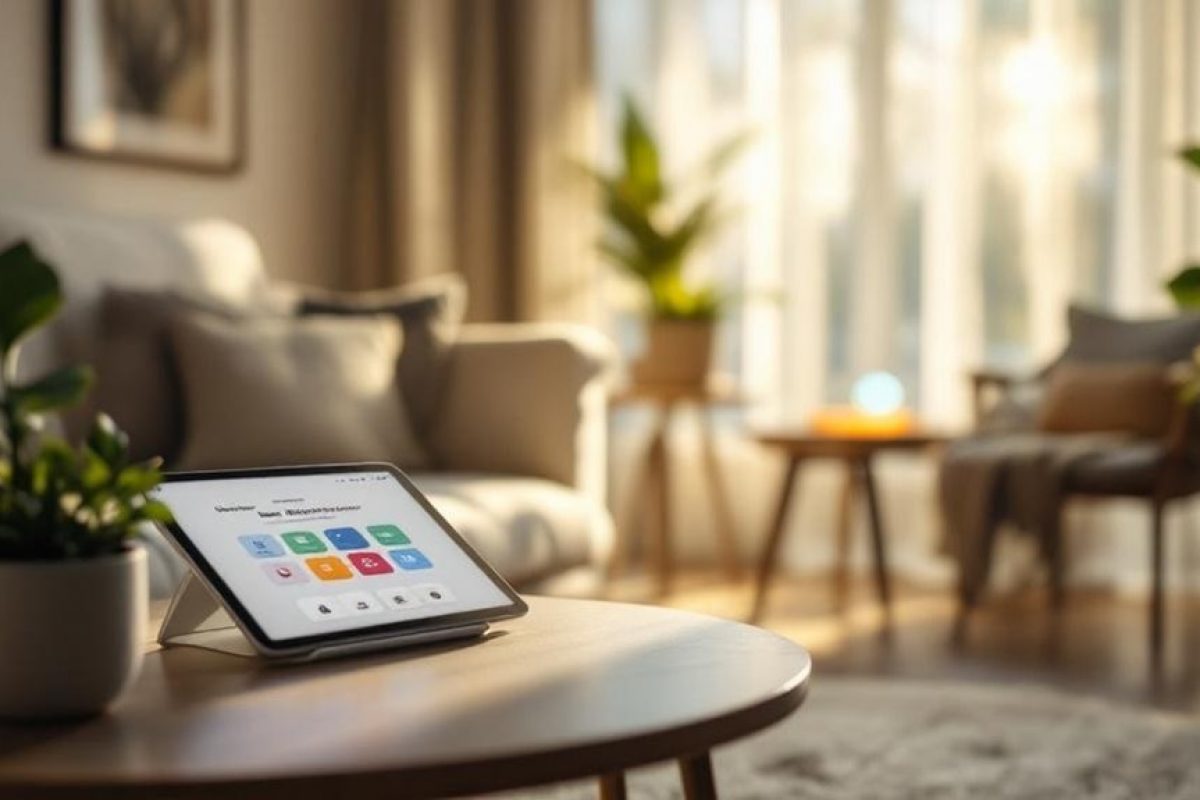To enhance home care with technology, leverage Remote Patient Monitoring for timely interventions, and utilize AI automation to improve efficiency. Implement telehealth solutions for easier access to healthcare, and integrate smart home technologies for added safety and comfort. Personalize care plans with AI-driven insights and address workforce challenges using digital tools. Ascertain compliance with regulations through advanced technology. Discover how these strategies can transform your care practices and benefit your patients even further.
Key Takeaways
- Implement Remote Patient Monitoring (RPM) to continuously track vital signs and enable early health interventions for better patient outcomes.
- Utilize AI-driven scheduling tools to optimize caregiver visits based on patient needs, enhancing efficiency and satisfaction.
- Incorporate smart home technologies, like sensors and voice assistants, to improve safety and ease daily tasks for patients.
- Ensure compliance with regulations by adopting Electronic Visit Verification (EVV) and secure technology for data protection.
- Foster a culture of care by encouraging feedback and investing in technology that enhances patient experiences and staff satisfaction.
Leverage Remote Patient Monitoring for Enhanced Care

Remote Patient Monitoring (RPM) is revolutionizing how you manage your health from the comfort of home. By leveraging RPM, you can greatly enhance care quality for yourself and others. The remote monitoring benefits include continuous tracking of essential signs, leading to early detection of health issues and timely interventions. This proactive approach fosters better patient engagement strategies, making it easier for you to stay connected with healthcare providers. With an expected rise in RPM usage, you’ll find that 97% of patients report high satisfaction, underscoring its effectiveness. Additionally, the global market for RPM is projected to reach $16.9 billion by 2030, showcasing its growing importance in healthcare. Embracing RPM not only improves your health outcomes but also contributes to a more efficient healthcare system, allowing you to focus on what matters most—caring for yourself and those around you. With concierge home care services like those offered by Young at Heart, you can ensure personalized support that complements your RPM efforts.
Utilize AI Automation to Improve Efficiency
As technology advances, utilizing AI automation can greatly improve efficiency in home care settings. You can streamline AI documentation processes, reducing time spent on paperwork by up to 30%, allowing you to focus more on patient care. Additionally, with the projected 8.2 million caregivers needed in the U.S. by 2028, optimizing these processes becomes even more critical to meet demand. Implementing AI tools can also support 24 Hour Care at Home by ensuring caregivers are effectively scheduled for high-acuity cases.
Automated systems for electronic visit verification guarantee real-time monitoring, minimizing billing errors and enhancing compliance. With AI-driven scheduling optimization, you can tailor caregiver visits based on patient needs, reducing travel times and improving care quality. Additionally, dynamic rescheduling capabilities help maintain continuity even during unforeseen changes. By integrating these technologies, you not only boost operational efficiency but also enhance the quality of care you provide, ultimately benefiting both caregivers and clients alike.
Implement Telehealth Solutions for Accessible Healthcare

Implementing telehealth solutions not only enhances access to healthcare but also transforms the way home care is delivered. By embracing telehealth accessibility, you can reduce travel burdens for patients, allowing them to receive care from the comfort of their homes. Virtual consultation benefits include ongoing management of chronic conditions and timely interventions, which are vital for maintaining patient health. With the removal of geographic restrictions and the expansion of eligible providers, more people, especially those in underserved areas, can access essential services. Additionally, audio-only options cater to patients without high-speed internet, ensuring everyone can benefit. By integrating telehealth into your home care strategy, you’re not just improving care—you’re making a meaningful difference in the lives of those you serve. Notably, the adoption of telehealth soared to 65% by 2021 as agencies sought solutions during the pandemic. Furthermore, caregivers who utilize respite care services are better equipped to manage their own well-being and mental health, ultimately enhancing the quality of care they provide.
Integrate Smart Home Technologies for Safety and Comfort
With telehealth solutions paving the way for more accessible healthcare, integrating smart home technologies can further enhance the safety and comfort of individuals receiving care at home.
Smart sensors can detect falls and unusual movements, alerting caregivers promptly. These technologies also monitor essential signs, providing real-time insights into health status, which is crucial as the aging population increasingly prefers to live at home. Moreover, personal care services can be complemented by these technologies to ensure a holistic approach to home care.
Voice assistants simplify daily tasks by allowing hands-free control of lighting, thermostats, and entertainment systems, reducing physical strain.
Smart beds can adjust positions for ideal comfort, while automated routines adapt to user habits, improving daily living.
Personalize Care Plans With Ai-Driven Insights

To truly enhance patient care, personalizing care plans with AI-driven insights is essential. By leveraging AI customization, you can create tailored care plans that address individual patient needs, greatly improving outcomes. These plans adapt in real-time, ensuring ideal therapy adherence and early intervention, which can reduce hospital readmissions by up to 70%. With AI analyzing lifestyles and conditions, patient engagement increases, fostering satisfaction and motivation during recovery. This personalized approach aligns with the goal of comprehensive care to ease the recovery process for patients and families. AI-powered personalization can significantly enhance patient safety by allowing for proactive interventions that detect warning signs early. Automated care plan generation streamlines processes, reducing manual errors while providing precise details like medication schedules and activity recommendations. By prioritizing personalized care, you not only enhance operational efficiency but also contribute to happier patients and caregivers, ultimately leading to better health outcomes and lower costs.
Address Workforce Challenges With Digital Tools
As home care providers grapple with significant workforce challenges, leveraging digital tools becomes essential for maintaining quality care.
By implementing sophisticated scheduling platforms, you can enhance scheduling efficiency and better match caregiver availability with patient needs. This not only reduces conflicts but also alleviates stress, promoting staff retention. Additionally, the home care workforce must grow to meet increasing demand, making it vital to optimize resources effectively. Companionship care provides emotional warmth that can help improve caregiver satisfaction and retention as well.
Digital tools can automate repetitive tasks, allowing your caregivers to concentrate on what truly matters—their patients. Additionally, real-time communication apps simplify coordination, further reducing burnout among staff.
By investing in technology that supports training and wellness, you create an environment where caregivers feel valued and empowered.
Ultimately, using digital solutions fosters a more sustainable workforce, ensuring your team remains dedicated to serving others effectively.
Ensure Compliance and Sustainability Through Technology
While steering through the complexities of home care, ensuring compliance and sustainability through technology is essential for your organization’s success. Implementing compliance technology like Electronic Visit Verification (EVV) not only aids in meeting federal and state mandates but also boosts operational efficiency. As audits increase, adopting secure systems becomes vital to protect sensitive patient data through advanced security measures like Multi-Factor Authentication (MFA). Embracing interoperability allows seamless data exchange, essential for maintaining regulatory compliance. Additionally, utilizing automation and analytics can enhance your sustainability practices by alerting you to potential compliance risks and streamlining reporting processes. By investing in these technologies, you’re not just staying compliant; you’re fostering a culture of care that prioritizes both safety and quality for your clients. Furthermore, with compliance as the top priority, organizations can better align their resources and operations to meet stringent regulatory standards.
Frequently Asked Questions
How Can Technology Improve Communication Between Caregivers and Families?
Technology improves communication between you and families through video conferencing and messaging apps. These tools enable real-time updates, emotional support, and effective coordination, making it easier to share important information and strengthen your caregiving relationships.
What Are the Costs Associated With Implementing These Technologies in Home Care?
When considering implementation costs, you’ll face various technology investments, from telehealth systems to EHRs. Balancing upfront expenses with ongoing fees is essential for sustainable home care, ultimately benefiting those you serve in the long run.
How Can We Ensure Patient Privacy With Digital Health Tools?
To guarantee patient privacy with digital health tools, you should implement data encryption and secure access protocols. Clear communication about data practices will also help build trust and encourage patients to share their information confidently.
What Training Is Needed for Caregivers to Use New Technologies Effectively?
To effectively use new technologies, you’ll need extensive caregiver education through technology workshops. These sessions should cover device handling, digital literacy, and practical skills, ensuring you’re confident and competent in delivering quality care to those you serve.
How Can We Measure the Effectiveness of Technology in Home Care?
To measure technology’s effectiveness in home care, you’ll want to track performance metrics and gather user feedback. This approach helps you identify areas for improvement, ensuring quality care and enhancing patient satisfaction.
Conclusion
By embracing these tech-driven strategies, you can greatly enhance home care for your loved ones. Remote monitoring and telehealth make healthcare more accessible, while smart home technologies add safety and comfort. Personalizing care with AI insights guarantees that each individual’s needs are met. Plus, digital tools can help tackle workforce challenges and maintain compliance. With these innovations, you’re not just keeping up with trends; you’re providing better, more efficient care that truly makes a difference.





